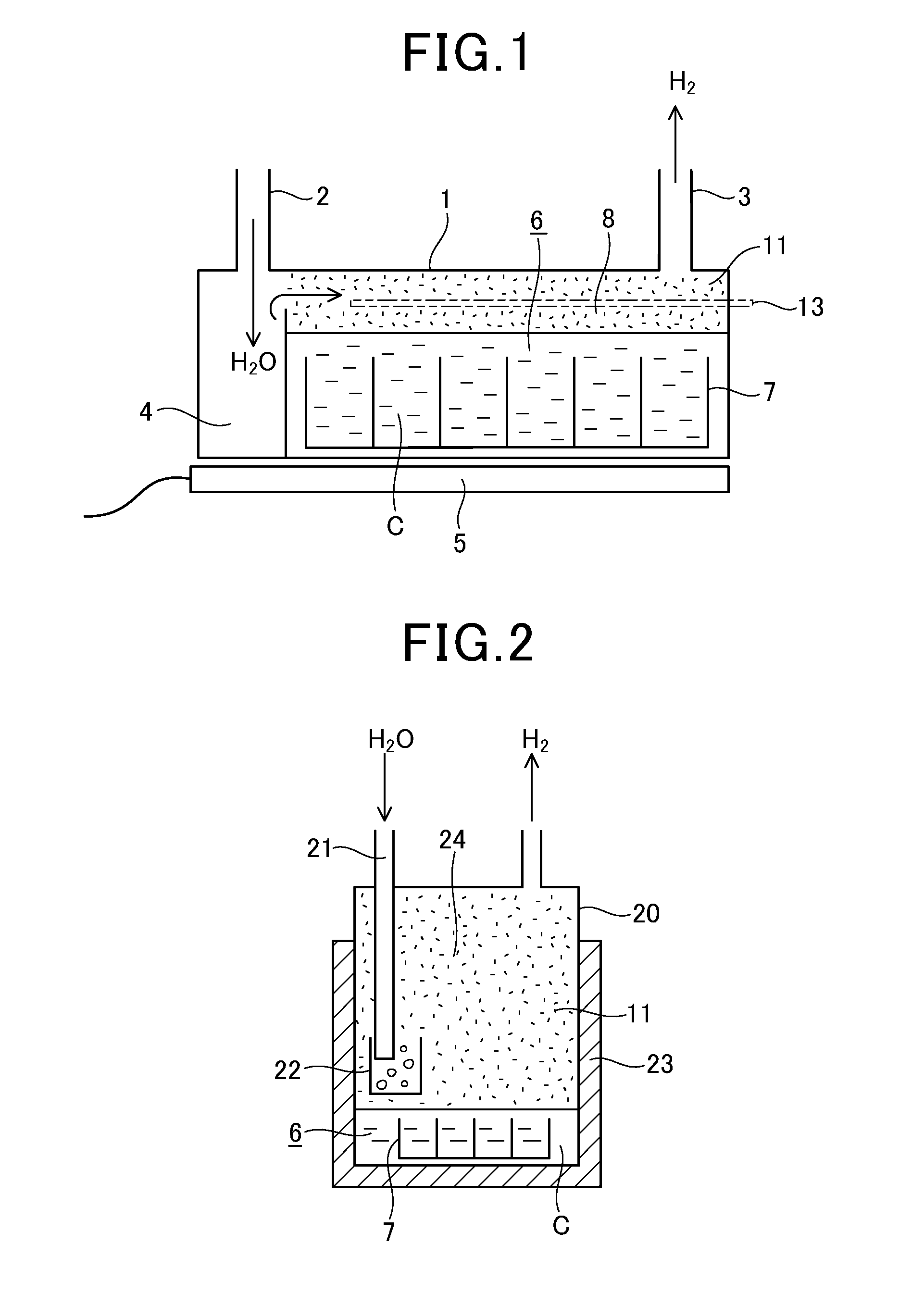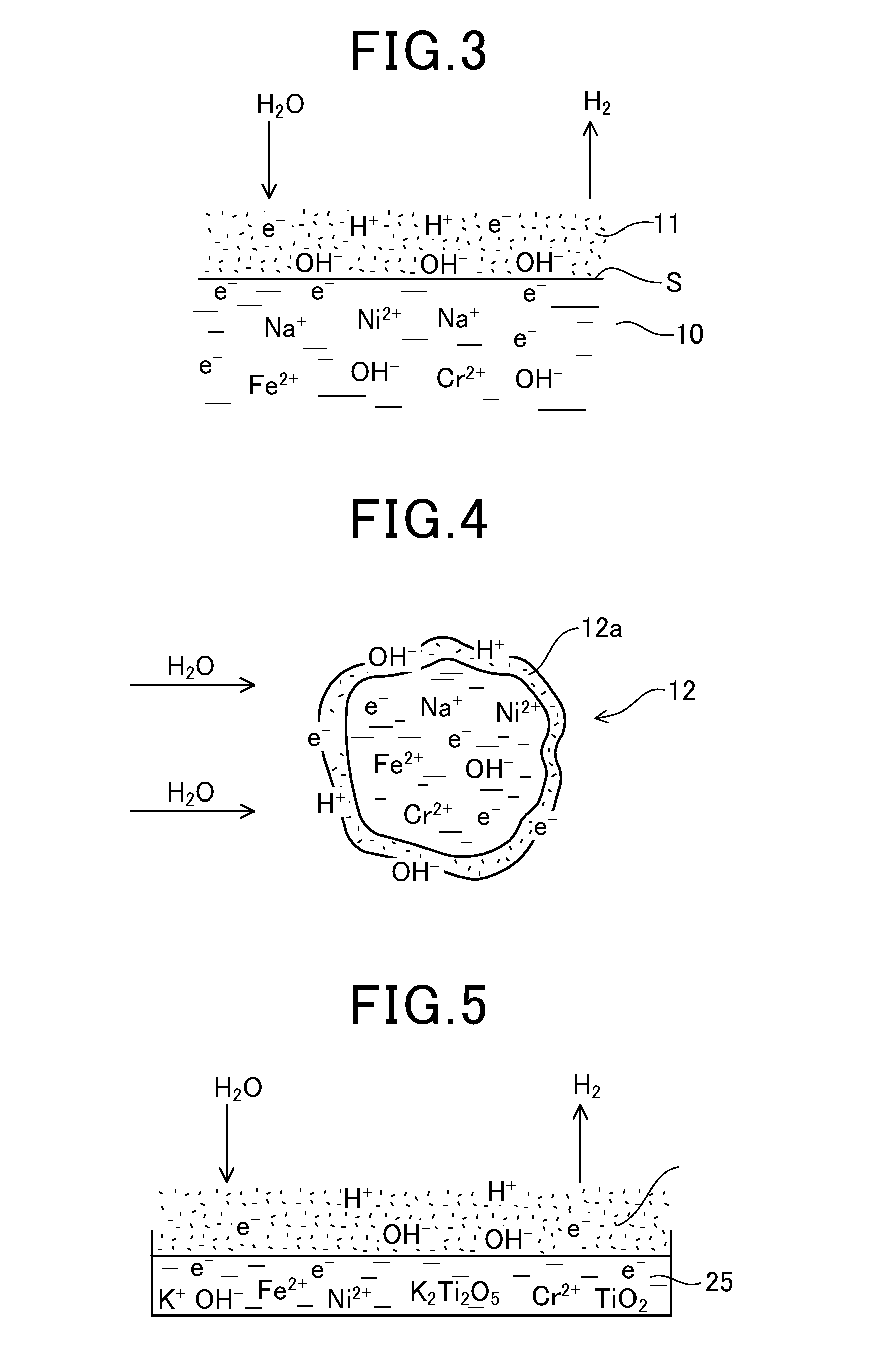Method of generating hydrogen
a hydrogen and hydrogen technology, applied in the field of hydrogen generation, can solve the problems of short reaction time, insufficient hydrogen generation, and insufficient purification water, and achieve the effects of long life span, long reaction time, and large reaction surface area
- Summary
- Abstract
- Description
- Claims
- Application Information
AI Technical Summary
Benefits of technology
Problems solved by technology
Method used
Image
Examples
experimental example
5) EXPERIMENTAL EXAMPLE
[0174]Next, experimental examples in which the hydrogen generating apparatus shown in FIG. 1 is used will now be explained. The existence of hydrogen was made sure by combustion tests of hydrogen.
1. The First Experimental Example
[0175]0.2 cc of water was supplied every 10 minutes into the casing 1 (width: 50 mm, length: 200 mm, height: 15 mm) without any catalyst therein. At this time, hydrogen is generated at a temperature of approximately 700° C., and however, the generation of hydrogen was stopped after 4 to 6 hours.
[0176]The material of the casing 1 was 18-8 stainless steel containing 18% Cr, 8% Ni and remains Fe.
[0177]In case that approximately 20 g of scrap stainless steel was put into the casing 1, hydrogen were generated for two days. Instead of the scrap stainless steel, scrap copper of approximately 10 g was put into the casing 1. At this time, the generation of hydrogen was stopped after one day. Further, when 96 g of scrap iron was input into the c...
PUM
| Property | Measurement | Unit |
|---|---|---|
| temperature | aaaaa | aaaaa |
| temperature | aaaaa | aaaaa |
| temperature | aaaaa | aaaaa |
Abstract
Description
Claims
Application Information
 Login to View More
Login to View More - R&D
- Intellectual Property
- Life Sciences
- Materials
- Tech Scout
- Unparalleled Data Quality
- Higher Quality Content
- 60% Fewer Hallucinations
Browse by: Latest US Patents, China's latest patents, Technical Efficacy Thesaurus, Application Domain, Technology Topic, Popular Technical Reports.
© 2025 PatSnap. All rights reserved.Legal|Privacy policy|Modern Slavery Act Transparency Statement|Sitemap|About US| Contact US: help@patsnap.com



